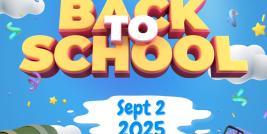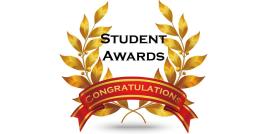Band 10/20/30
This class is performance oriented. Through performance, the students will learn to value and critically respond to music of different styles, cultures and time periods. The band meets twice a week during noon hour to rehearse. The band performs in at least two concerts, which form part of the evaluation.
Choir 10/20/30
This class is performance oriented. Through performance, the students will learn to work together as a group to achieve a musical result. They will experience music of different styles, time periods and languages. The Choral meets twice a week during noon hour to rehearse. The Choral performs in at least two concerts, which form part of the evaluation.
Drama 10
This is an introductory course. In this class, students will be introduced to the basics of drama, including storytelling, movement and mime, basic characterization, voice work, script work, and improvisation. No previous drama experience is required, but regular attendance is critical for success in Drama 10.
Drama 20
This course involves four main areas of study: acting, improvisation, characterization and script work. A relevant social issue, using various drama strategies and focusing on commitment, concentration and believability, will be explored. There is also a development of skills and abilities in spontaneous improvisation and the portrayal of characters. Script work includes analysis, blocking, rehearsal and performance.
Drama 30
This is an advanced drama course open to students who have been successful in at least one drama course at the 10 or 20 level. Students will study theatre history and develop a collective creation to be performed publicly at the end of the semester. A high level of student commitment is required in this course.
Music 10/20/30
This is a non-performance oriented class for students who want to learn guitar as well as students with pre-existing skills on guitar. The objective is to develop a student’s musicianship and value of music through the medium of guitar. The focus is on developing technique, theory, ensemble playing and listening skills. Written and playing tests are part of the evaluation.
Visual Art 10
Students are encouraged to apply their knowledge of the elements of art and principles of design to their own work and discussions. They explore ideas, materials, tools and techniques in order to present their ideas in a personal way. The cultural/historical (examination of art and artists from a variety of periods and cultures) creative/productive (making of art) and critical/responsive (analysis and criticism of one's own and others' art) components of the Arts Education curriculum are fundamental to the instruction of this course.
Visual Art 20
Recommended: Art 10
Visual Art 20 is a continuation of the grade 10 program. As in previous years, the students explore ideas, materials, tools, techniques and present their ideas in a personal way (creative/productive). Discussion and analysis of artists' works are used to further develop students skills and knowledge (critical/responsive). An understanding of various artists, artistic styles and cultures is encouraged through research, discussion and community/gallery visits (cultural/ historical).
Visual Art 30
Recommended: Art 20
Students in Grade 12 explore a variety of arts expressions through the creative/productive, cultural/ historical, and critical/responsive components of Arts Education. They increase their understanding of the languages and creative processes of visual art and convey their own ideas using a variety of materials, tools and techniques. An in-depth understanding of various artists, artistic styles and cultures is encouraged through discussion, research, and community/gallery visits. Throughout the class, students are challenged to interpret and analyze art works based on content found in the work.
AP Art 30
The AP Studio Art portfolios are designed for students who are seriously interested in the practical experience of art. Students submit portfolios for evaluation at the end of the school year. The AP Studio Art Program consists of three portfolios – 2-D Design, 3-D Design and Drawing – corresponding to the most common university foundation courses. Students may choose to submit any or all of the Drawing, Two-Dimensional Design, or Three-Dimensional design portfolios. AP Studio Art students create a portfolio of work to demonstrate the artistic skills and ideas they have developed, refined, and applied over the course of the year to produce visual compositions. Students who successfully pass the AP exam will receive university credit.















